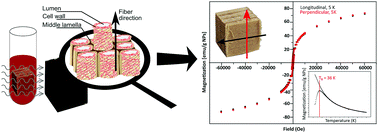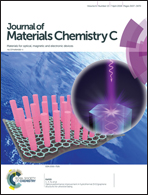Magnetic wood by in situ synthesis of iron oxide nanoparticles via a microwave-assisted route
Abstract
Functional materials with high porosity and hierarchical structures are highly demanded for numerous material applications. In this study a magnetic hybrid material derived from wood and superparamagnetic iron oxide nanoparticles (SPIONs), was synthesized by microwave-assisted thermal decomposition. This novel in situ functionalization approach resulted in a homogeneous distribution of the integrated inorganic component within the entire complex wood cell wall structure, which was previously not achieved. In a detailed investigation based on confocal Raman microscopy imaging, transmission electron microscopy, and optical microscopy the precipitated phase and the resulting hybrid structure were characterized. Magnetic measurements revealed the impact of the anisotropic wood scaffold on the integrated magnetic functionality and confirmed the isotropic superparamagnetic characteristics of the in situ precipitated nanoparticles. Therewith, it is clearly demonstrated, that the anisotropic properties of the obtained hybrid material result from the particle organization in the given spruce wood structure and no alteration of particle properties is induced by the presence of the lignocellulosic material.



 Please wait while we load your content...
Please wait while we load your content...